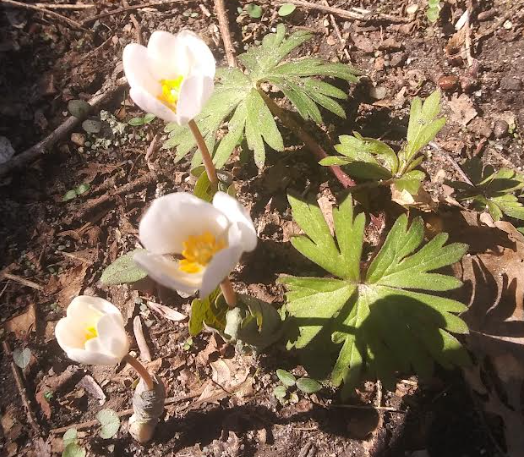OK, Sanguinaria canadensis might not be the shortest blooming plant in my woodland garden, but it is probably a very close second to Jeffersonia diphylla (twinleaf) – whose blooms often don’t make it to the end of the day. The bloodroot flowers bloom for a few days, tops. The petals drop with the slightest rain or wind. But often that is all that is necessary to get the job done – bees are already out this time of year to assist with pollination. The stem and flower are the first to emerge, and often the leaves are still unfurling (like in the picture below) when the flowers are starting to go.
I have had these for almost a decade now, and they are doing well, although I might have to rethink that vision of expansive beds of bloodroot. The singular plants from a decade ago are now small clusters, confirming that this plant spreads by rhizomes. And I have found plants in random places in the yard, indicating that some seeds germinated as well. But nature does not care much for the human clock and bloodroot will do its thing at its own pace.

Original post: http://www.capecodwoodlandgarden.com/2013/04/22/sanguinaria-canadensis-bloodroot/
Hi! I just put some of the Bloodroot bare roots into the ground in early April. I don’t know if these bare roots are still in the ground or have been eaten. I am hoping they will come up next year but if not, I will try again. They are so beautiful. I would like to replace these and other ground-cover in the areas where I have non native pachysandra. I think it will take a while for this to happen! Thanks for the info and the picture.